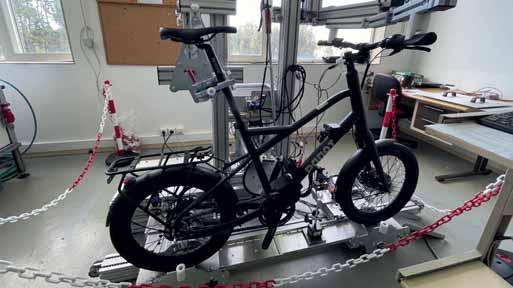
2 minute read
Five hot industry problems and solutions
ZEIST, the Netherlands – The provisional agreement on overhauling the EU battery regulations is an important step in providing greater clarity for the future. In a series of online reports, e-bike battery expert, James Post, addresses the problems and offers solutions for making batteries safe in an affordable way. He also discusses the chip supply chain crisis.
Regarding lifetime, reliability and safety, ebike batteries lag behind electric vehicles, Post wrote in a previous Bike Europe publication on e-bike battery topics. In a new
About the author
series on battery and e-bike system safety, he will address five new industry problems and discuss solutions for this essential part of e-bikes. After registration on the website, you can access the series via www.bike-eu.com/44528/jamespost.
1. Chip supply chain crisis causes and remedies – opportunities to save money. This report asks: why use automotive components to circumvent supply chain shortages? The redesign of the BMS with generic chips is a better solution to solve this problem. E-bike manufacturers, who buy batteries, and e-bike kit vendors should at least have a Plan B. The R&D costs are less than €10,000 but pay back in lower BMS production costs.
2. How to design much safer e-bike batteries at little extra cost.
James Post has a long-standing career in professional hi-tech power electronics, data communication and integration. Since 2012 he has focused on design consultancy for e-bike batteries, recognising that many improvements are possible in this relatively young industry. He is associated with Prof. Michael Pecht, director at CALCE. Since 2012, he provides battery design lectures at Eurobike aimed at e-bike R&D and management. He can be reached at James.post@ebikebattery.technology for consultancy inquiries.
Low-cost Chinese and often smart BMSs don’t come with certain safety features, for example, they don’t switch off at too high a temperature and charging voltage in case of a BMS breakdown. This often happens due to insufficient input protection. A self-test is needed and can be done at a low cost. E-bike (kit) vendors: if your BMSs have no self-test, read this article.
3. Safer LFP (now) & Na-ion (2025) batteries – inexpensive and heavier. LFP (LiFePO4) batteries are mainstream with EVs, industrial and other applications and are much safer with roughly double cycle life. More than 50% of all Teslas in 2022 came with LFP batteries. Thanks to larger cells (e.g., 33140 –15Ah), the pack cost, weight and volume are similar to NMC batteries. Don’t miss the boat – get informed!
4. Crucial, important and useful BMS functions – most of them are cheap. BMS self-testing (does the BMS switch off at too high temperature and charge voltage?) safety (monitors increasing degradation) is crucial. Accurate capacity display (coulomb counting), document warranty violations and eligibility. Ebike (kit) vendors: is your BMS state-of-the-art?
5. How to get smooth drive-off, higher motor efficiency/low wear/noise. Without expensive torque sensors a (much) smarter motor controller can offer a smoother ride, especially driving off from standstill. This is a major issue, particularly among older consumers. Thus, the system cost is less than with low-cost motor controllers and torque sensors. Get to know all the benefits of better motor controllers.






